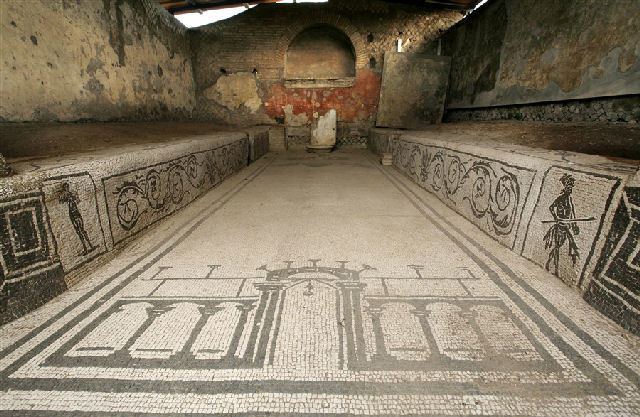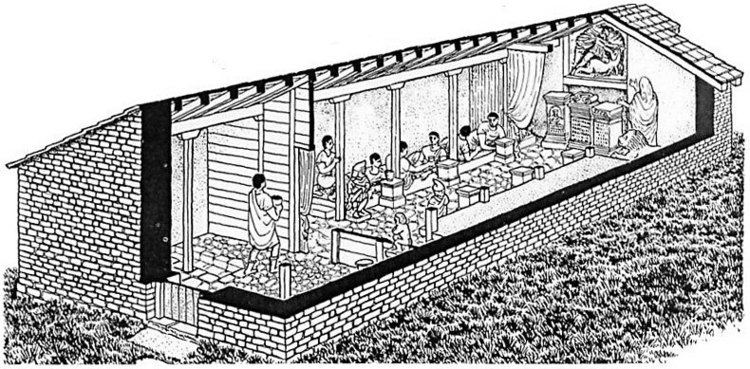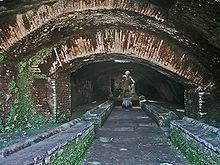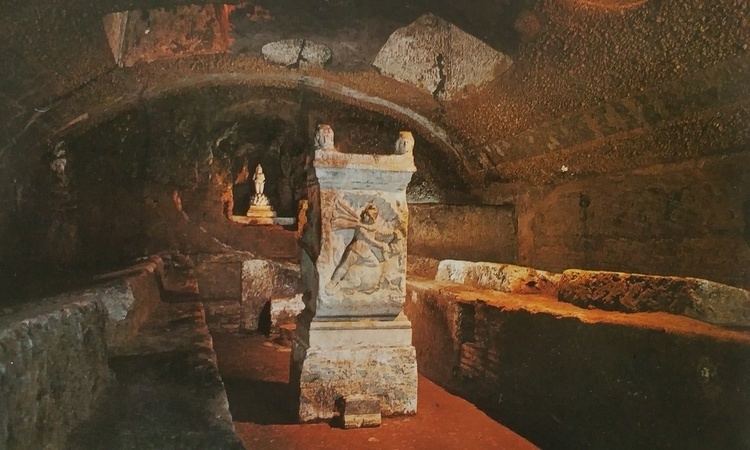 | ||
Similar Basilica of San Clemente, Ostia Antica, Santa Prisca, London Mithraeum, Santo Stefano al Monte Ce | ||
Mithraeum as a symbolic planetarium reza assasi insap ix
A Mithraeum (Latin pl. Mithraea), sometimes spelled Mithreum, is a large or small Mithraic temple, erected in classical antiquity by the worshippers of Mithras.
Contents

The Mithraeum was either an adapted natural cave or cavern, or a building imitating a cave. When possible, the Mithraeum was constructed within or below an existing building, such as the Mithraeum found beneath Basilica of San Clemente in Rome. While a majority of Mithraea are underground, some feature open holes in the ceiling to allow some light in, perhaps to relate to the connection of the universe and the passing of time. The site of a Mithraeum may also be identified by its singular entrance or vestibule, which stands opposite from an apse-shaped wall in which a pedestal altar at the back stood, often in a recess. Also its "cave", called the Spelaeum or Spelunca, with raised benches along the side walls for the ritual meal. Many mithraea that follow this basic plan are scattered over much of the Roman Empire's former territory, particularly where the legions were stationed along the frontiers (such as Britain). Others may be recognized by their characteristic layout, even though converted as crypts beneath Christian churches.

From the structure of the Mithraea it is possible to surmise that worshippers would have gathered for a common meal along the reclining couches lining the walls.


The Mithraeum primarily functioned as an area for initiation, in which the soul descends and exits. The Mithraeum itself was arranged as an "image of the universe". It is noticed by some researchers that this movement, especially in the context of mithraic iconography (see below), seems to stem from the neoplatonic concept that the "running" of the sun from solstice to solstice is a parallel for the movement of the soul through the universe, from pre-existence, into the body, and then beyond the physical body into an afterlife.

Most Mithraea can be dated between 100 B.C. and A.D. 300, mostly in the Roman Empire.
Virtual mithraeum
Notable mithraea
Bosnia
France
Germany
Hungary
Israel
Italy
Romania
Spain
Switzerland
Syria
United Kingdom
